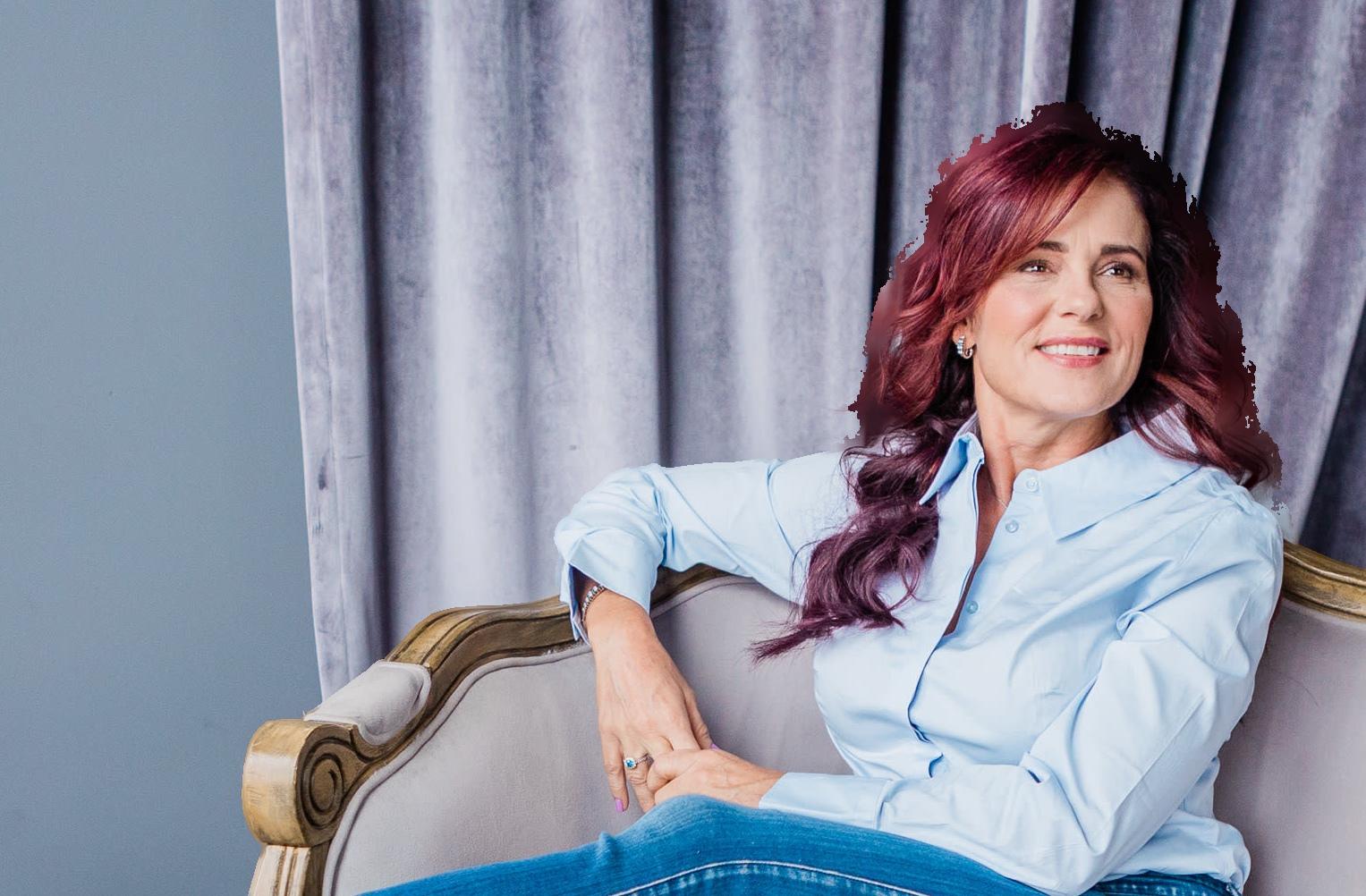





e r s p e c t i v e








e r s p e c t i v e

In a profession long defined by tradition, hierarchy, and
precedent,thewindsofchangeareundeniable,andthey arebeingledbyextraordinarywomen.
ThisspecialeditionofEnterpriseReviewofCanada'sMost Influential Women Lawyers: Revolutionizing the Legal Profession in 2025 isatributetothetrailblazers,visionaries, and relentless advocates who are reshaping the landscape of law across the country. These women are not only at the forefront of legal practice, but also redefining what leadership, equity, and impact look like in the modern legal world.
Fromcourtroomstoboardrooms,policycirclestocommunity clinics,theseleadersexemplifythekindofcourage,intellect, and compassion that drive real change. They are breaking down barriers, championing human rights, advancing legal innovation, and mentoring the next generation of legal professionals often while navigating challenges unique to theirgenderinahistoricallymale-dominatedfield.
Aswespotlighttheirstories,weareremindedthatinfluenceis notjustabouttitleortenureit’saboutpurpose,resilience,and the ability to inspire others. The women featured in this edition represent diverse backgrounds, legal specializations, and career paths, but they share a common thread: a deep commitment to justice and an unwavering determination to usethelawasatoolforprogress.
We hope their journeys ignite conversations, spark inspiration, and reaffirm the importance of inclusion and excellenceineverycornerofthelegalprofession.Thefuture of law in Canada is being rewritten, and these women are holdingthepen.
HappyReading!

C o v e r S t o r y
Beyond the Bar: Re-envisioning Success for Women in Law
A r t i c l e s
Forging New Paths
The Rise of Women Lawyers in Canada
Breaking Ground
The Journey of Female Legal Trailblazers in Canada


Editor-in-Chief
Merry D' Souza
CONTENT
ManagingEditorBillLimbert
AssistingEditorJoeLee


www�twitter�com�enterprisereviewmedia�com� www�facebook�com�enterprisereviewmedia�com�
WEAREALSOAVAILABLEON

VisualizerStewartJonas
Art&DesignDirectorRobinClarck
AssociateDesignerAuthurWatson DESIGN
SALES
VicePresidentJilKendal
Asst�VicePresidentKevinJohnson
Asst�ManagerRobertHanson
BusinessDevelopmentExecutiveThomasE�

Email sales@enterprisereviewmediacom ForSubscription www�enterprisereviewmedia�com
TechnicalHeadAndreaJackson
TechnicalSpecialistMikeAnderson
TechnicalConsultantOliverSutton TECHNICAL
SME-SMO
ResearchAnalystWendyJ�
SEOLeadTashaL�
June, 2025
Copyright©2025 enterprisereviewmedia�com,Allrights reserved�Thecontentandimages usedinthismagazineshouldnotbe reproducedortransmittedinany formorbyanymeans,electronic, mechanical,photocopying,recording orotherwise,withoutprior permissionfrom enterprisereviewmedia�comReprint rightsremainsolelywith enterprisereviewmedia�
AnnieNoaKenet Founder
KenetFamilyLaw kenetfamilylaw.com
KateMazzucco FoundingPartner
MichelleMulchan SeniorManaging Lawyer
BeyondLawLLP beyond.law
RussellAlexander Collaborative FamilyLawyers russellalexander.com
MoganDanielsSlager LLP mdslawyers.com Partner
StaceyL.Stevens PersonalInjuryLawyer
ThomsonRogersLLP trlaw.com
Visionaryentrepreneurwithapassionforcreative strategy,businessinnovation,andempowering communitiesthroughpurpose-driveninitiatives, combiningintuitionwithadeepsenseofleadership.
Experiencedlegalprofessionalwithafocuson advocacy,complexcaseresolution,andclientcenteredsolutions,bringingclarityandstrengthto high-stakeslegalmatterswithconfidence.
Exceptionallegalmindwithdeepknowledgeof litigation,negotiation,andregulatoryframeworks, respectedforherleadership,mentorship,andability tonavigatehigh-pressurelegalenvironments.
Strategicthinkerwithexpertiseincollaborative leadership,riskmanagement,andgrowthplanning, knownfordrivingimpactfuldecisionsandfostering long-termprofessionalpartnershipsacrosssectors.
Dedicatedlegaladvocatespecializinginpersonal injurylaw,knownforhercompassionateapproach, sharplitigationskills,andrelentlesspursuitofjustice foraccidentvictimsandtheirfamilies.
Beyond the Bar: Re-envisioning Success for Women in Law







The legal industry is at a crossroads. Traditionally definedbyrigidhierarchiesandestablishednorms,it mustevolvetomeettherealitiesofthemodernworld. Accessibility, fairness, and sustainable career paths are no longeroptional—theyareessential.Formanyprofessionals, particularly women, the legal field remains a paradox: an avenueofinfluenceandadvocacyyetstillboundbyoutdated structures that often demand personal sacrifice and force womentochannelmasculineenergy.
"Success does nothavetobesynonymous withburnout.It’s about leading from a place of authenticity, where ambition and well-being coexist," says Stacey L. Stevens, a personal injury lawyer and partner at Thomson Rogers LLP, inspirationalspeaker,andauthor Sheisnotjustparticipating in this shift toward a more balanced, inclusive profession—sheisdrivingit.Havingforgedanon-traditional path to success, Stacey understands the tensions between professionalambitionandpersonalfulfillment.Hermissionis to break the cycle of burnout and self-doubt, especially for womeninlaw
Stacey’s journey into law was unconventional and best describedasintentional.At15,shelefthomewithnothingbut a few garbage bags full of clothes and a determination to proveeveryonewrong:“OnedayIwillbealawyer”.Despite constantdoubtandobstacles,sherefusedtoquit.
In the mid-80's, she started as a receptionist at a law firm, workedherwayuptolegalassistant,putherselfthroughnight schooltobecomealawclerk,andultimately,at40,becamea personalinjurylawyer,allwhileraisingtwosons.Hercareer wasbuiltongrit,notprivilege.

Staceywasdrawntopersonalinjurybecauseit’snotjustabout casesbutpeople.“It’sabouthelpingindividualsrebuildtheir livesafterdevastatingtragedies,”shesays.“They’renotjust seen as case files but as human beings deserving of justice, dignity,andsupport.”
This determined mother and grandmother knows a thing or twoabouthowtonavigateaworldthatoftentoldhertheodds were against her But just as she had refused to accept those limitations, she now fights to make sure her clients don’t either
ForStacey,oneofthemostfulfillingpartsofherworkisbeing asteadypresenceforherclients,guidingthemthroughsome of the most challenging moments of their lives. “I don’t just represent them—I empower them to reclaim their sense of control,theirconfidence,andtheirfuture.”
This philosophy extends into her broader mission: helping aspiringfemalelawyersdeveloptheskillsandstrategiesthat strengthen their confidence and resilience Stacey is determinedtohelpwomenlawyersredefinesuccessontheir own terms – without guilt, burnout, or losing themselves in theprocess.
Younglawyersquicklyrealizethedemandsofalawpractice canbeunforgiving.“Themessagingcomingoutoflawschool isthatwomenlawyersareexpectedtoworkharderandshow up more than their male peers to achieve the same success,” Staceysays.Formany,thatmeanshidingtheirtrueauthentic selves,ultimatelyleavingthemdrainedmentally,physically, andemotionally.
In2023,theFederationofLawSocietiesofCanadareleased Phase 1 of it’s Report on the State of Mental Health in the Legal Profession, which found that 67.5% of practicing women lawyers suffer silently with anxiety, depression and burnout. Studies across North America confirm that law valuesmasculinetraitslikeunshakableconfidence,emotional detachment, and aggressive communication styles, putting uniquestressorsonwomen.Thismanifestsinhigherburnout ratesandself-caredeficits.
Staceybelievesimpostersyndromecreepsin.“Womenoften silence themselves in meetings, overanalyze their contributions, and question whether they will ever be enough,”shesays.“Theyabsorbtheenergythatcomesfrom
unspoken biases, like being talked over in negotiations or being asked to be the notetaker or get coffee.” These microaggressionsoftenfeedwomen’sinnercriticsandimpact how they show up in their lives, and how they see their potentialtobecomeleaders.Overtime,ittakesatoll.
In 2023, the Law Society of Ontario also released its annual Statistical Snapshot of Lawyers and Paralegals, revealing troubling findings. While more than 50% of law school graduates are female, about 30% of women leave their practicewithinfiveyears.
“These studies came out at the perfect time,” says Stacey Duringthepandemic,shewasexhausted,frustratedandather wits end. “For years, I was managing a successful law practice,commutingtoworkandhome,andthenmeetingmy family’sneeds.ButIneverstoppedtothinkabouttheimpact thishadonme;Ijustpushedthrough,thinkingitwaspartof thejob.”ThesefindingspromptedStaceytodomoreresearch andreflectonhowsocietalexpectationsshapedhervaluesand beliefs.
“Ilearnedthatyoungwomen(andmen)areshapedbysocietal expectations that ultimately leave them with a set of preconditioned values and beliefs,” says Stacey. “But once theyentertheworkforce,theselearnedbehaviouraltraitsmay no longer serve them.” These include prioritizing others’ needsovertheirown,minimizingtheirownneedsoutoffear of exclusion, enduring hardship in silence and people pleasing.
Thiscanleadwomentooverextendthemselves,micromanage theirenvironments,orsacrificetheirownauthenticitytomeet other people’s expectations. “Women are then expected to excelinaworkplacewheretheyaretoldto“leanin,”despite facing systemic barriers, and show assertiveness that may resultinunflatteringlabels,”saysStacey “Intheend,women lawyers overwork to prove their worth, suppress their authenticselvestofitrigidnorms,orburnoutfromtryingto balanceimpossibleexpectations.”
Staceysawherselfintheresearchandrealizedshehadtolook atthingsdifferently “IhadtoquestionhowIwasactingasa result of societal norms, and whether my behaviour was hurting rather than helping me.” For years, Stacey followed unspoken rules in the legal world—project confidence, stay competitive,andnevershowemotion—butwasthatthetrue Stacey? As she dismantled old values and beliefs that no longer served her, she created a new set that redefined what achievement and authenticity meant to her Now, she is still confident and competitive, but in a way that is rooted in
collaboration and compassion. She communicates authentically,whetherwithstaff,clientsoropposingcounsel. She integrates her roles lawyer, mother, leader, and mentor—ratherthanrejectingthem.
Two decades ago, when Stacey worked as a summer law student,therewasonlyonewomanlawyer.Afterarticling,she practiced at another firm where she was the only female lawyer It wasn’t until she joinedThomson Rogers LLPthat shebegantoseeashiftinfemalerepresentation.Today,nearly 40%ofThomsonRogers’partnershipismadeupofwomen. “ThisissomethingIamveryproudof,”saysStacey.TheLaw Society of Ontario’s 2020 Annual Report on membership statistics found that women made up only 26% of law firm partners.“It’simportantformetobeatafirmwherewomen are at the table, and young female lawyers have mentors to turntoforadvice.”
Over the past 24 years, Stacey has mentored many women lawyers, both formally and informally, who’ve found questioned whether they can sustain the profession they once dreamed of. One such lawyer came to Stacey at a breaking point, unsure if she had what it took to continue Through conversations,Staceyhelpedherseethatherstrugglesweren’ta reflectionofhercapabilitybutofthepre-conditionedvaluesand







beliefs that shaped her story They explored ways for her to rewrite the narratives she encountered every day from others and her own inner critic Together, they worked on acknowledging the clash between her feminine energy and traits and the masculine energy and traits required as a practicing lawyer, identifying the impact this had on her, and developingstrategiestoempowerhertobegroundedinboth. They focused on rewriting her story, reframing old narratives andredefiningsuccessinawaythatwasauthentictoher
Today,thislawyerstandsconfidentandaccomplished,leading her career on her own terms Her transformation is not just personal but proof that when women have the right support, theydonothavetochoosebetweensuccessandfulfillment.For Stacey,mentoringwasareminderthat“leadershipisnotabout forcingwomentofitintosystemsthatarenotmadeforusbut about empowering them to build careers that align with their valuesandaspirations”
Women who stop chasing impossible expectations and release self-imposed guilt can step into careers built on resilience,balance,andexcellence.Thisisn’taboutrejecting ambition but pursuing it in a way that doesn’t require selfdestruction.


Stacey’sfirmbeliefinthepoweroftransformationfuelsher Every day, she wakes up knowing she has an opportunity to makeanimpactinherclients’andmentees’lives.Herjourney isatestamenttothepowerofauthenticity,demonstratingthat women can redefine success on their terms without sacrificingtheirwell-being.
Staceyisnotwaitingforthesystemtoshift—sheiscreating the shift. She is showing women that they already have the powertoredefinetheirownsuccess,bothprofessionallyand professionally Assheleadsbyexample,Staceyispavingthe way for a new generation of lawyers who will no longer equatesuccesswithburnout.
The Canadian legal profession has undergone rapid transformationduringthelasthundredyears,driven in large measure by the dedication and industry of womenlawyers.Fromstatute-exclusiontoleadershiponthe bench and at the bar, women have challenged the traditional grainandreshapedthecountry'slegallandscape.Whilemuch progress has been made, this article also highlights the systemic challenges that persist and the steps necessary to ensure a more inclusive and equitable future for all legal professionals.
Clara Brett Martin's entry into the legal profession was a breakthroughmomentinCanadianhistory Herstruggletobe acceptedasa"person"underthelawandherultimatetriumph opened the doors of opportunity for future generations of womenlawyers.Institutionalbarrierswerethereforher,and women,thoughtheyhadaccomplishedsomuch,hadlimited access, were discriminated against in society, and were excludedfromleadershiprolesinlawfirmsandcourtsoflaw fordecadestocome.
In the mid-20th century, women began gaining theoretical recognitionaslawyers,butpracticalimpedimentspersisted.It wasn't until later decades that de facto gender equality for lawyers was realized. Women such as Beverley McLachlin, Canada's first female Chief Justice of the Supreme Court, demonstrated that women could not only be accommodated butexcelatthemostadvancedechelonsoflegalpractice.
Women now form nearly half of all practicing barristers in Canada. In 2019, 49,175 women barristers and 56,678 men barristersexisted—thatisaclearindicationofprogress


towards gender equality. Law schools have achieved this through the application of inclusive hiring and admission policies. The University of Windsor's Faculty of Law, for instance, reported that 70% of its class of 2024 consisted of women,aninitiativethatreflectseffortstowelcomediversity andresilienceamongstudents.
Furthermore,gendervisibilityalsogainedgroundforwomen lawyers.The Chambers Canada Guide has seen tremendous increasesintherateofwomenlawyersinrecentyears.Inits latest edition, 28.4% of highly ranked lawyers were women—a 10% plus growth from six editions. Notably, Ontario leads in gender representation among highly ranked lawyers at 25%, followed by Alberta at 20%. However, disparities persist in provinces like Quebec and British Columbia,whichlagbehindnationalaverages.
Studiesshowhigherattritionamongwomenduetowork-life conflicts,lowerexposuretomentorship,andinstitutionalbias within law firms. Women remain in the minority as heads; only 23% of senior positions in legal directories are held by women lawyers a minor increase from 15% six years earlier.
Thelegalprofessionisalsowithinthescopeofpayequityand women's career development. Though more men are being replaced by new intakes into the profession, altogether too many of them are being met with obstacles that stop them frombuildingcareersintoseniorpositions.Thisisanareathat necessitates systemic change on the part of law firms and professional organizations to treat women solicitors on the sametermsandaffordthemthesameopportunities.
Gender portrayal varies significantly across the Canadian provinces. Ontario and Alberta dominate with relatively higher percentages of top-ranked female attorneys Saskatchewanalsoboastsencouragingpercentagesat22.2%. Some other provinces such as Manitoba, however, have no top female attorneys—a dismal indicator of the persisting imbalancesintheprofession.
Throughoutmuchofthenation,evenbeyondthemajorcities, there are institutional obstacles to women. These include difficulties like demanding legal careers and family life, a shortage of institutionalized mentorship programs, and culturalattitudesthatmaydiscouragewomenfrompursuing or remaining in senior legal roles. Law societies and
professional organizations must conduct localized assessments to understand the root causes of inequality and develop targeted initiatives—such as mentorship networks, leadership development programs, and regional awards that spotlightwomen’sachievements.
Women lawyers' integration into the Canadian system is a witnesstotheirgrit,determination,andstrengthofcharacter tofightagainstcenturies-longbarriersinthelegalprofession. With much achieved on the fronts of representation and visibility,equalitystillhastobeachievedforonaconsistent basisacrossseveralfronts.Soundmentorshipschemescanbe a strong source of inspiration and direction for women to proceedoncareerdevelopmentandleadershippathways.
Simultaneously with this, policy intervention by law societies i.e., intervention to address systematic discrimination,equalremuneration,andflexibleemployment arrangements is essential to constructing equitable professional cultures Integration of diversity through equitable admissions policies into law schools also establishes the foundation for long-term representation Additional acknowledgment of women's success through awards and professional league tables not only legitimates their labor but also inspires and acts as a vehicle of empowermentforaspiringlegalprofessionals.
The arrival of women lawyers in Canada is a reason to celebrate, yet also an imperative. Pathbreakers broke glass ceilings,andwomenlawyersnowgoontoredefineleadership andvisionsofdistinctioninlaw.Asdatasuggests,equalityis always just beyond reach conditioned by provincial boundaries, attrition, and entrenched barriers to career progression.Tocreateanintegratedlegalprofession,thelegal industry requires more than parity figures; it requires recurring, thoughtful change that carries women with every progressionintheirowncareerpaths.


In a country where justice, equity, and inclusion are
considered foundational principles, the rise of female legal trailblazers in Canada tells a powerful story of perseverance, purpose, and progress These pioneering women have shattered barriers, defied expectations, and redefined the legal landscape making the profession more reflectiveofthecommunitiesitserves.
Their journey is more than just a professional triumph; it's a testament to the enduring fight for gender equality in one of theworld’smostrespectedlegalsystems.
Historically,theCanadianlegalfieldwasdominatedbymen, and the inclusion of women was both delayed and resisted. Clara Brett Martin, the first woman to become a lawyer in Canada in 1897, had to fight institutional resistance, gender bias, and a deeply entrenched belief that women lacked the temperament for legal work. Her victory, however, marked the first crack in the proverbial glass ceiling, laying the groundwork for generations of female legal trailblazers to follow.
Throughout the early and mid-20th century, women in law faced overt discrimination from being denied articling opportunitiestobeingoverlookedforcourtroomappearances orpartnerships.Theircompetencewasquestioned,andtheir ambition was often dismissed as inappropriate. Yet, many persisted, often becoming experts in family law, human rights, or advocacy work fields considered “acceptable” for womenatthetime.
The narrative began to shift in the latter half of the 20th century.Withbroadersocialmovementspushingforequality andwomen'srights,thelegalprofessionsawaslowbutsteady transformation.Womenbegannotonlytoentertheprofession


in greater numbers but to assume roles of leadership and influence.
Today, women like Justice Rosalie Abella, the first Jewish womanappointedtotheSupremeCourtofCanada,exemplify what modern female legal trailblazers can achieve. Justice Abella’sworkinhumanrightslawandheruniqueperspective on equality and fairness have left an indelible mark on Canadianjurisprudence.Similarly,BeverleyMcLachlin,who served as Canada’s first female Chief Justice, redefined judicial leadership during her 17-year tenure, making decisionsthatshapednationalpoliciesonissuesrangingfrom indigenousrightstofreedomofspeech.
Theirjourneysremindusthatrepresentationmattersnotjust innumbersbutinperspectivesthatchallengestatusquosand inspiresystemicchange.
It'simportanttorecognizethatthecategoryof“femalelegal trailblazers” is far from monolithic. Indigenous women, Black women, immigrant women, and women from the LGBTQ+ community continue to carve their own unique paths in the Canadian legal ecosystem, often navigating additionallayersofdiscriminationandcomplexity.
TrailblazerslikeDr CindyBlackstock,aGitxsanactivistand socialworkerwhohasusedlegalavenuestoadvocateforFirst Nations children, demonstrate how legal activism intersects with cultural identity and community responsibility Similarly,lawyerssuchasNaiomiMetallic,thefirstMi’kmaq womantoclerkattheSupremeCourtofCanada,arechanging thefaceandfocusofCanadianlegalpriorities.
These stories remind us that the journey of female legal trailblazers is also about making room for intersectional voices,allowingthelegalsystemtoevolveinbothsubstance andstructure.
Oneofthemostimpactfulaspectsoftheriseofwomeninlaw is the strong culture of mentorship and advocacy that has followed.Womenwhohavebrokenthroughlegalceilingsare nowactivelypullingothersupwiththem—offeringguidance, opening doors, and creating safe spaces within law firms, courts,andlegaldepartments.
Organizations such as the Women’s Legal Education and Action Fund (LEAF) and Canadian Association of Black
Lawyers (CABL) play a pivotal role in nurturing emerging talentandadvocatingforequitablepracticesacrosstheboard. More law schools now prioritize gender equity and offer platformsforfemalelawstudentstoconnectwithestablished professionals.
Thestrengthoftoday’sfemalelegaltrailblazersliesnotonly in their individual achievements but also in their collective momentum. As a community, they continue to challenge outdated norms, demand accountability, and build bridges thatensurethejourneyforwardismoreinclusivethantheroad behind.
The legal profession in Canada is still not without its challenges. Gender pay gaps, underrepresentation in leadership roles, and issues like workplace harassment remain pressing concerns. But the direction is clear, and the progressisundeniable.
Thenextgenerationoffemalelegaltrailblazersisenteringthe field with a broader vision one that integrates technology, embracesholisticjustice,andrecognizesthelawasatoolfor societaltransformation.Theyarenotjustaskingforaseatat thetable;theyareredesigningthetableitself.
Withmorewomenbeingappointedasjudges,takingonhighprofile litigation roles, and leading law firms, the impact is already visible. Their presence is normalizing excellence, redefiningpowerstructures,andanchoringtheprofessionin empathy,ethics,andequity
Conclusion
The journey of female legal trailblazers in Canada is both inspiringandongoing.Fromtheearliestdaysofstruggleand exclusion to the present era of impact and innovation, these women have changed not only what is possible in the legal world—but also what is expected.As they continue to rise, challenge, and lead, they serve as living proof that justice is strongestwhenitreflectsthediversityofthepeopleitserves.










